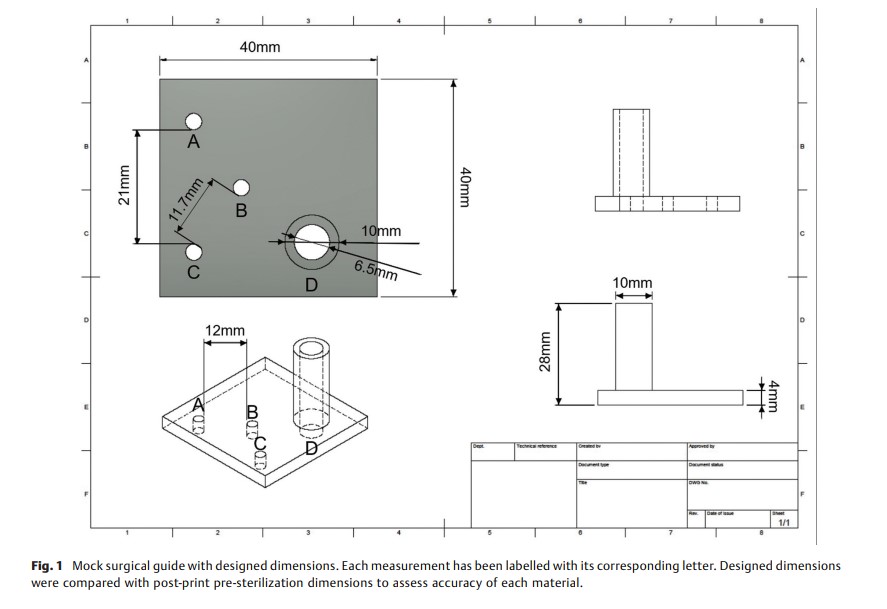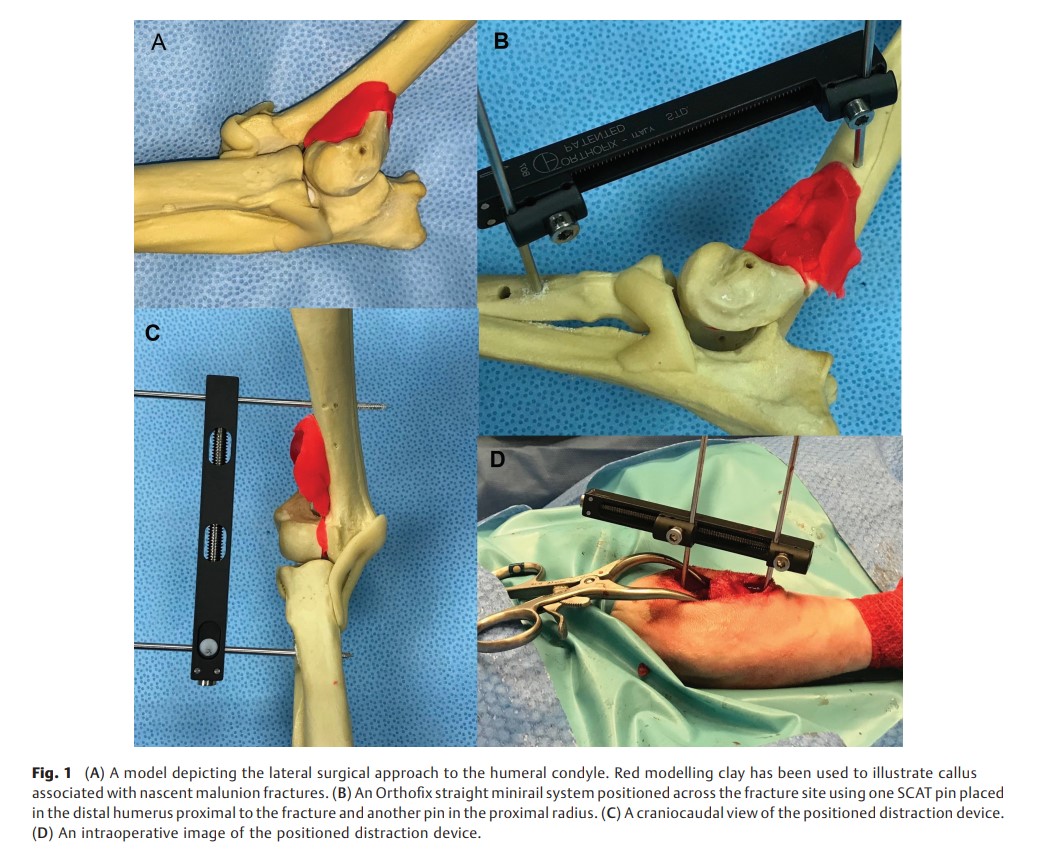
Thieme旗下兽医学领域的期刊是研究人员、专家和从业人员公认的首选资源。欢迎免费访问本期的精选论文。
Veterinary and Comparative Orthopaedics and Traumatology
Danielle M. Marturello, Loïc M. Déjardin

Objectives The aim of this study was to evaluate the post-sterilization dimensional accuracy of a standardized drilling guide, three-dimensionally printed using biocompatible methacrylate monomers.
Study Design A mock surgical guide was designed and printed in five resins (n = 5/material) using a commercially available desktop stereolithography printer. Pre- and post-sterilization dimensions were measured for each sterilization method (steam, ethylene oxide, hydrogen peroxide gas), then statistically compared; p-value less than or equal 0.05 was considered significant.
Results While all resins produced highly accurate replicas of the designed guide, the amber and black resins were unaffected by any sterilization method (p ≥ 0.9). For other materials, ethylene oxide produced the largest dimensional changes. However, mean post-sterilization dimensional changes for all materials and sterilization methods remained less than or equal to 0.05mm.
Conclusion This study demonstrated that post-sterilization dimensional change of evaluated biomaterials was minimal, and less than previously reported. Additionally, amber and black resins may be preferred to reduce post-sterilization dimensional change, as they were unaffected by any sterilization method. Given the results of this study, surgeons should feel confident using the Form 3B printer to create patient surgical guides. Furthermore, bioresins may provide safer alternatives for patients compared with other three-dimensional printed materials.
VCOT Open
Cornell et al.

Lateral humeral condylar (LHC) nascent malunion fractures are challenging to treat because of extensive callus formation, scar tissue and contracture of surrounding tissues. The objective of this retrospective case series is to describe the novel procedural use of an intraoperative distraction device to aid in the reduction and anatomical alignment of nascent malunion LHC fractures along with long-term functional outcomes in these cases. Medical records of five consecutive cases of dogs with seven nascent malunion LHC fractures that were treated between 2015 and 2018 with the aid of an intraoperative distraction device were reviewed. Relevant clinical and radiographic data, forelimb circumference, elbow goniometry and clinical outcome were evaluated. Anatomic reduction and fixation with complete healing were achieved in all seven cases. Implants were removed in four cases to resolve persisting lameness. Three dogs (4 cases) were available for long-term follow-up: mean circumference and range of motion were decreased in the operated limbs as compared with the contralateral normal limbs. One dog (with bilateral fractures) was euthanized due to poor outcome. In the other five elbows, outcome was acceptable. Based on the results of this case series, use of an intraoperative distraction device to aid in anatomical reduction and fixation of nascent malunion LHC fractures should be considered.
